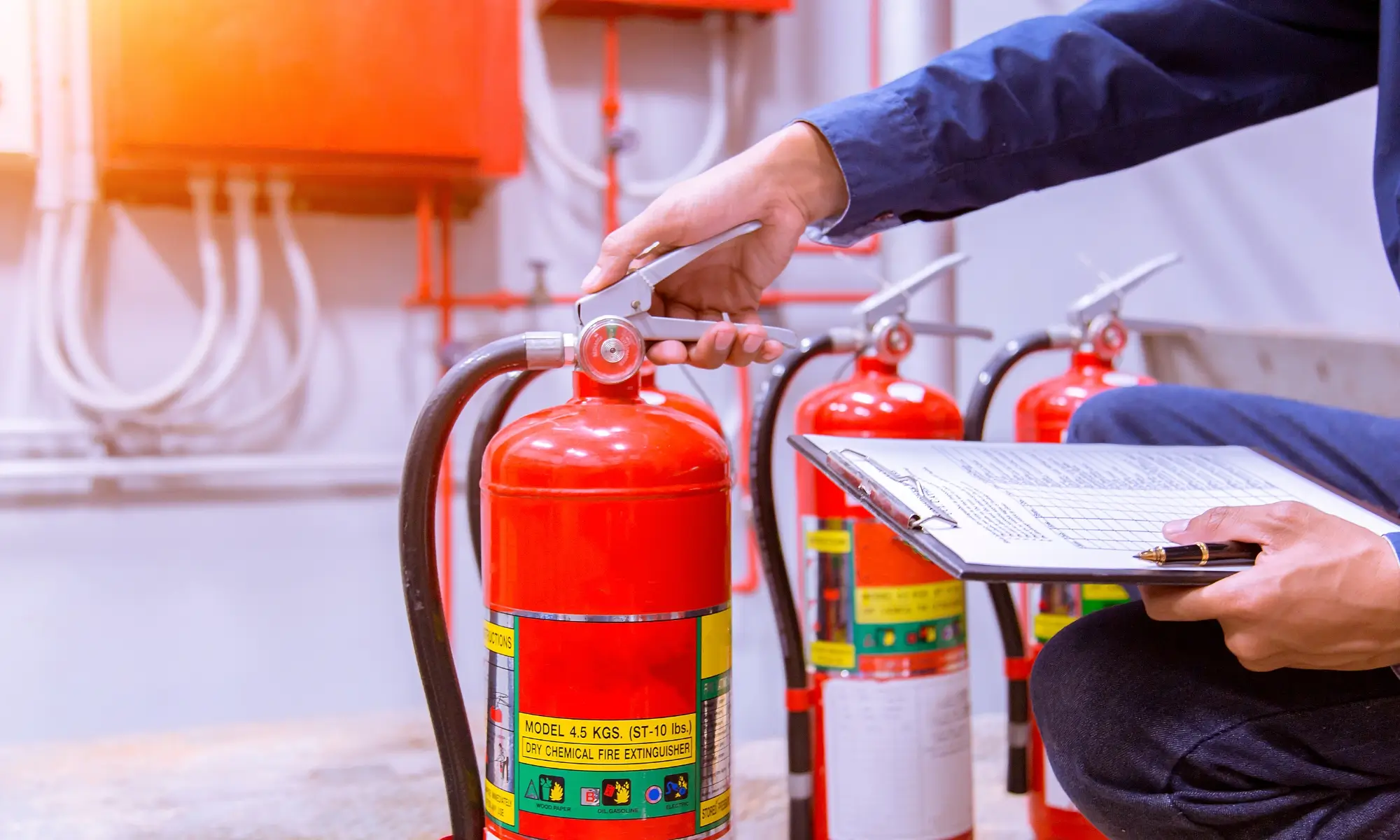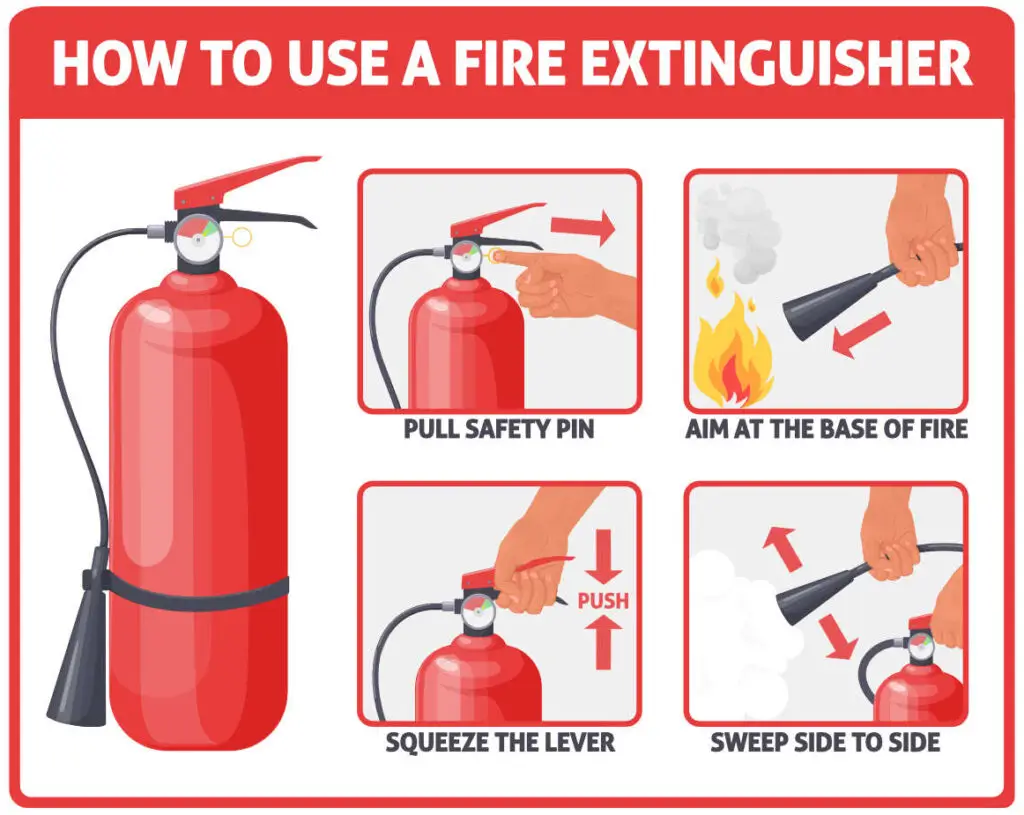Fire safety is critical for everyone at home, at work, or in public spaces. Knowing how to properly use a fire extinguisher can mean the difference between controlling a small fire and facing a devastating blaze. The PASS method provides a straightforward, easy-to-remember process for effectively operating a fire extinguisher.
This guide will walk you through the PASS technique step by step, ensuring you’re well-prepared in case of an emergency.

Why Is the PASS Method Important?
The PASS method—Pull, Aim, Squeeze, Sweep—is a standardized procedure for operating fire extinguishers effectively. Its importance lies in providing a simple, memorable sequence that enables individuals to respond promptly and safely during fire emergencies.
Importance of the PASS Method:
- Simplicity and Memorability: The four-step process is easy to recall, even under stress, ensuring quick and correct action.
- Universal Application: The PASS method is applicable to most fire extinguisher types and offers a consistent approach across various settings.
- Enhanced Safety: By guiding users through proper operation, it minimizes risks associated with incorrect extinguisher use, such as ineffective fire suppression or personal injury.
- Empowerment: Equips individuals with the confidence to address small fires, potentially preventing escalation and reducing damage.
Historical Context:
The PASS method was developed to standardize fire extinguisher operation as these devices became more prevalent in homes and workplaces. Organizations like the National Fire Protection Association (NFPA) and the Occupational Safety and Health Administration (OSHA) have promoted the PASS technique in their training programs, emphasizing its role in fire safety education.
Over time, the PASS method has been integrated into fire safety protocols worldwide, underscoring its effectiveness in emergency preparedness.

What Does PASS Stand For?
PASS is an easy-to-remember acronym that outlines the four basic steps for using a fire extinguisher effectively in an emergency. Here’s what it stands for:
1. Pull the Pin
Pulling the safety pin is the first step in using a fire extinguisher. This pin serves as a safeguard to prevent accidental discharge of the extinguishing agent.
How to Pull the Pin:
- Locate the pin at the top of the extinguisher near the handle.
- Grip the pin firmly and pull it out. Sometimes, you may need to twist it slightly to break the tamper seal.
Why This Step Matters:
Removing the pin unlocks the extinguisher, allowing you to squeeze the handle and discharge the contents. Without pulling the pin, the extinguisher won’t work.
Pro Tip: Practice removing the pin on an unused extinguisher to familiarize yourself with the process.
2. Aim at the Base of the Fire
After pulling the pin, the next step is to aim the extinguisher nozzle or hose.
Where to Aim:
- Direct the nozzle or hose at the base of the fire, where the fuel source is located.
- Avoid aiming at the flames, as this won’t stop the fire; the base where the fire originates needs to be extinguished.
How to Position Yourself:
- Stand safely, typically 6–8 feet from the fire. This ensures you are far enough to avoid danger but close enough for the extinguisher to be effective.
Why This Step Matters:
- Targeting the base of the fire interrupts the fire’s fuel-oxygen-heat chain reaction, effectively putting it out.
3. Squeeze the Handle
Once you have aimed the extinguisher correctly, you can release the extinguishing agent by squeezing the handle or lever.
How to Squeeze:
- Hold the extinguisher firmly with one hand on the handle and the other on the nozzle or hose for control.
- Press the handles together with steady, even pressure to discharge the extinguishing agent.
What Happens Next:
- The extinguisher releases a pressurized substance (e.g., foam, powder, CO2, or water mist) designed to suppress the fire.
Why This Step Matters:
- Controlled pressure ensures the extinguishing agent is released effectively and consistently, maximizing its impact on the fire.
Safety Note: Be cautious when handling carbon dioxide (CO2) extinguishers, as the nozzle can become extremely cold and may cause frostbite.
4. Sweep from Side to Side
The final step is to sweep the nozzle back and forth across the base of the fire.
How to Sweep:
- Keep the nozzle aimed at the base of the fire and move it in a sweeping motion, covering the entire fire area.
- Continue sweeping until the fire is completely extinguished.
What to Watch For:
- Be cautious of the fire reigniting. Stay in position and monitor the area for any signs of flames reappearing.
- If the fire reignites, repeat the Aim-Squeeze-Sweep process until it is fully out, or the extinguisher is empty.
Why This Step Matters:
- Sweeping ensures the entire base of the fire is covered with the extinguishing agent, preventing it from spreading or reigniting.
Important: Watch the area closely after the fire is out to ensure it doesn’t reignite. If it does, repeat the process.

Key Considerations When Using the PASS Method
While the PASS method (Pull, Aim, Squeeze, Sweep) provides a straightforward guide to operating a fire extinguisher, several important factors must be considered to ensure you use it safely and effectively. These considerations go beyond the basic steps and help you make informed decisions during a fire emergency.
1. Assess the Fire
Before using a fire extinguisher, evaluate the situation carefully. Determine whether the fire is small and contained, such as a trash can fire, or if it is spreading quickly. If the fire is too large or generates thick smoke, prioritize evacuation and call emergency services.
- Use extinguishers only for small, contained fires.
- Evacuate if the fire spreads or blocks escape routes.
- Call emergency services if unsure about safety.
2. Choose the Right Extinguisher
Different fires require specific extinguishers, and using the wrong type can worsen the situation. Familiarize yourself with the extinguisher types in your environment, such as ABC for common household fires or Class K for grease fires.
- Identify the fire’s class (A, B, C, D, or K).
- Use multipurpose ABC extinguishers for most home and office fires.
- Learn about specialized extinguishers for unique fire types.
3. Ensure Personal Safety
Your safety is the highest priority when fighting a fire. Always position yourself with a clear escape route behind you, maintain a safe distance, and avoid areas filled with thick smoke to prevent inhalation injuries.
- Always keep an open escape route.
- Maintain a safe distance of 6–8 feet from the fire.
- Evacuate immediately if the smoke becomes overwhelming.
4. Understand the PASS Method
The PASS method—Pull, Aim, Squeeze, Sweep—is a proven technique for using fire extinguishers effectively. Familiarize yourself with each step before an emergency to act quickly and confidently during a fire.
- Pull the pin to unlock the extinguisher.
- Aim at the base of the fire, not the flames.
- Squeeze the handle evenly to release the agent.
- Sweep side to side to cover the fire’s base.
5. Monitor the Fire After Extinguishing
Even if the fire appears extinguished, stay vigilant, as reignition is possible. Monitor the area for smoke or flames and be prepared to repeat the PASS method or evacuate if necessary.
- Watch for signs of reignition, such as smoke or embers.
- Repeat the PASS method if the fire reignites.
- Call professionals to inspect and confirm the fire is fully out.
6. Maintain and Inspect Fire Extinguishers
Regular maintenance ensures your fire extinguisher will function properly during an emergency. Check pressure levels, inspect the body for damage, and schedule professional servicing as recommended.
- Inspect extinguishers for physical damage or leaks.
- Check the pressure gauge to ensure it is in the green zone.
- Recharge or replace extinguishers after any use or per schedule.
7. Know Your Limits
Recognize when a fire is too dangerous to handle. If the fire is spreading rapidly, is too large to control, or is creating intense heat and smoke, prioritize evacuation and call emergency services.
- Stop if the fire grows or spreads rapidly.
- Evacuate if the fire creates excessive heat or smoke.
- Call emergency services for uncontrollable fires.
8. Get Trained
Practical training on fire extinguisher use enhances confidence and preparedness. Seek training from local fire departments or safety organizations to improve your ability to act during a fire emergency.
- Participate in hands-on fire extinguisher training.
- Learn fire prevention strategies and evacuation protocols.
- Understand how to use specific extinguishers in your environment.
Conclusion
The PASS method provides a simple, effective way to operate a fire extinguisher during an emergency. You can confidently extinguish small fires and protect lives and property by following these steps—Pull, Aim, Squeeze, and Sweep.
However, always prioritize personal safety. If you’re unsure about your ability to control a fire, evacuate and call emergency services. Fire extinguishers are a powerful tool, but they’re not a substitute for professional help in larger fires.
Quick Recap: PASS Method
- Pull the pin to unlock the extinguisher.
- Aim at the base of the fire.
- Squeeze the handle to release the agent.
- Sweep from side to side to cover the fire’s base.
Bookmark this guide, share it with friends and colleagues, and ensure that your family or workplace is equipped and informed about fire safety. Preparedness can save lives!

